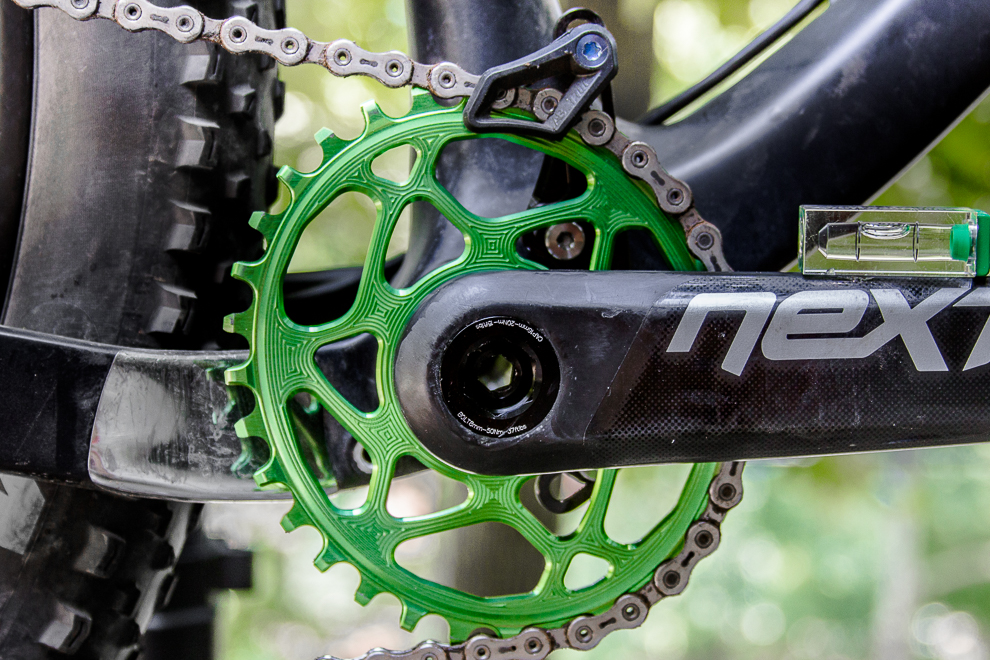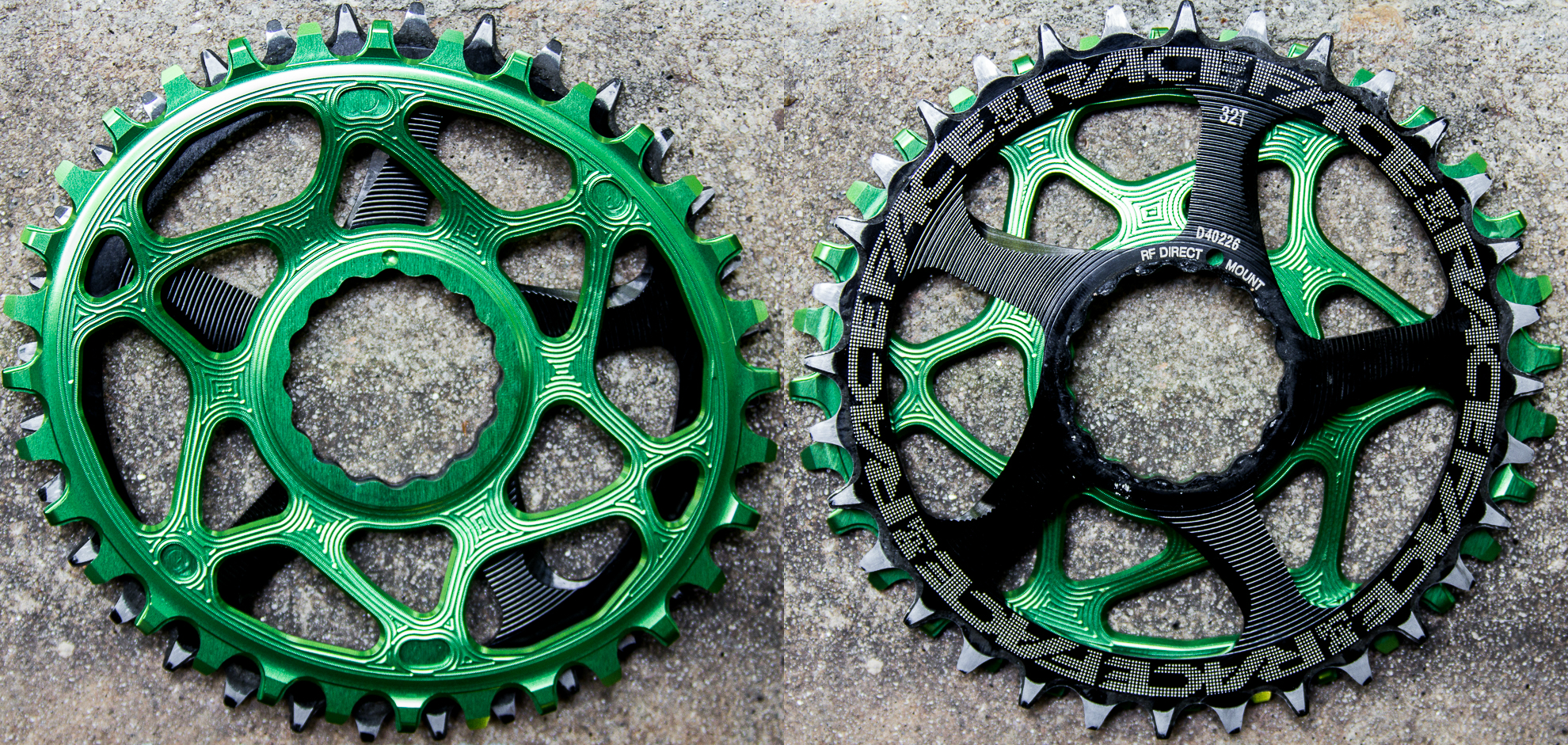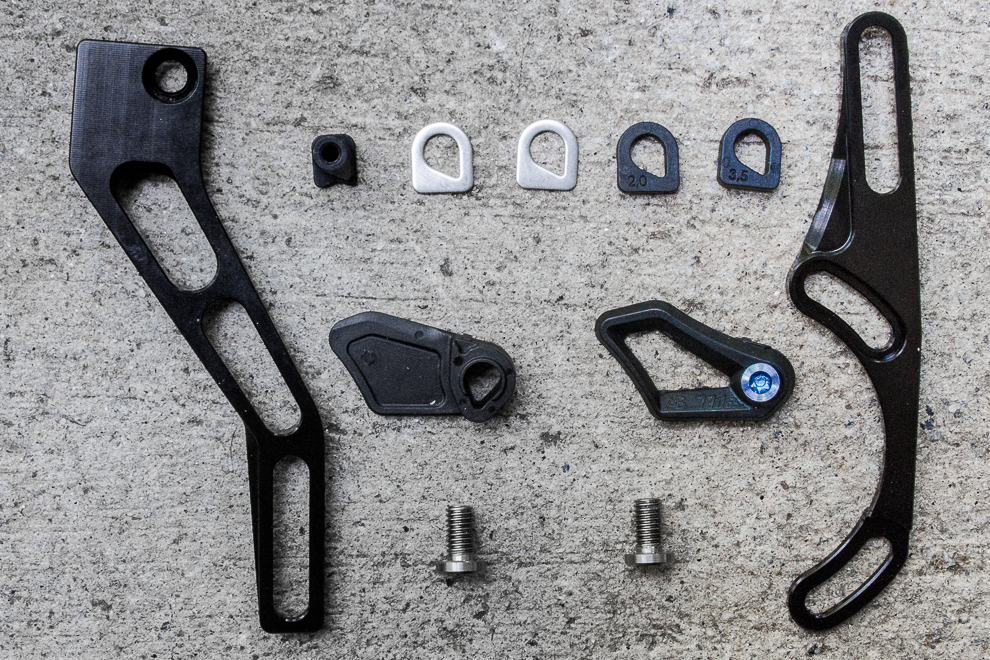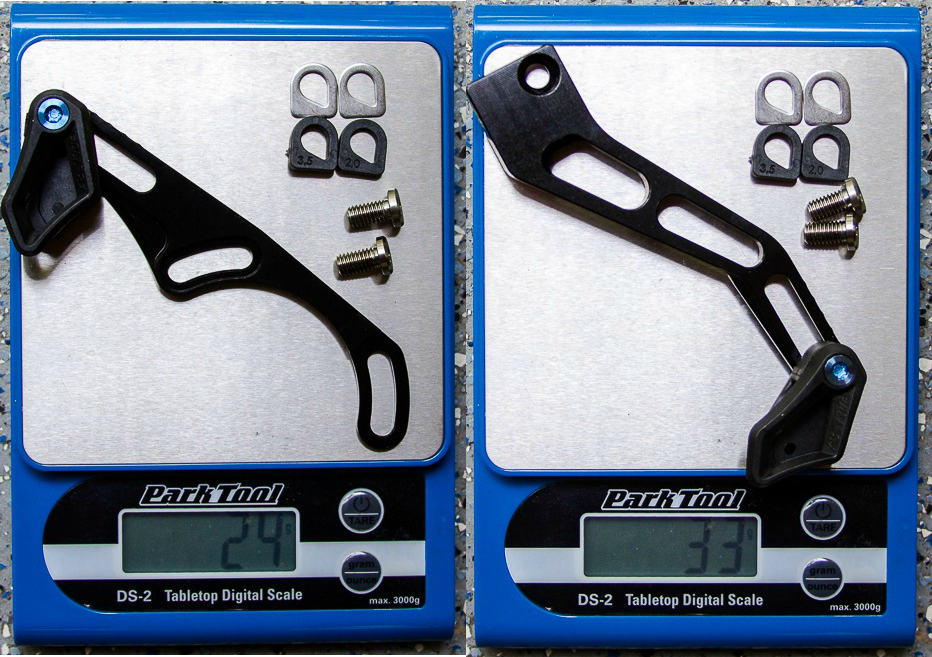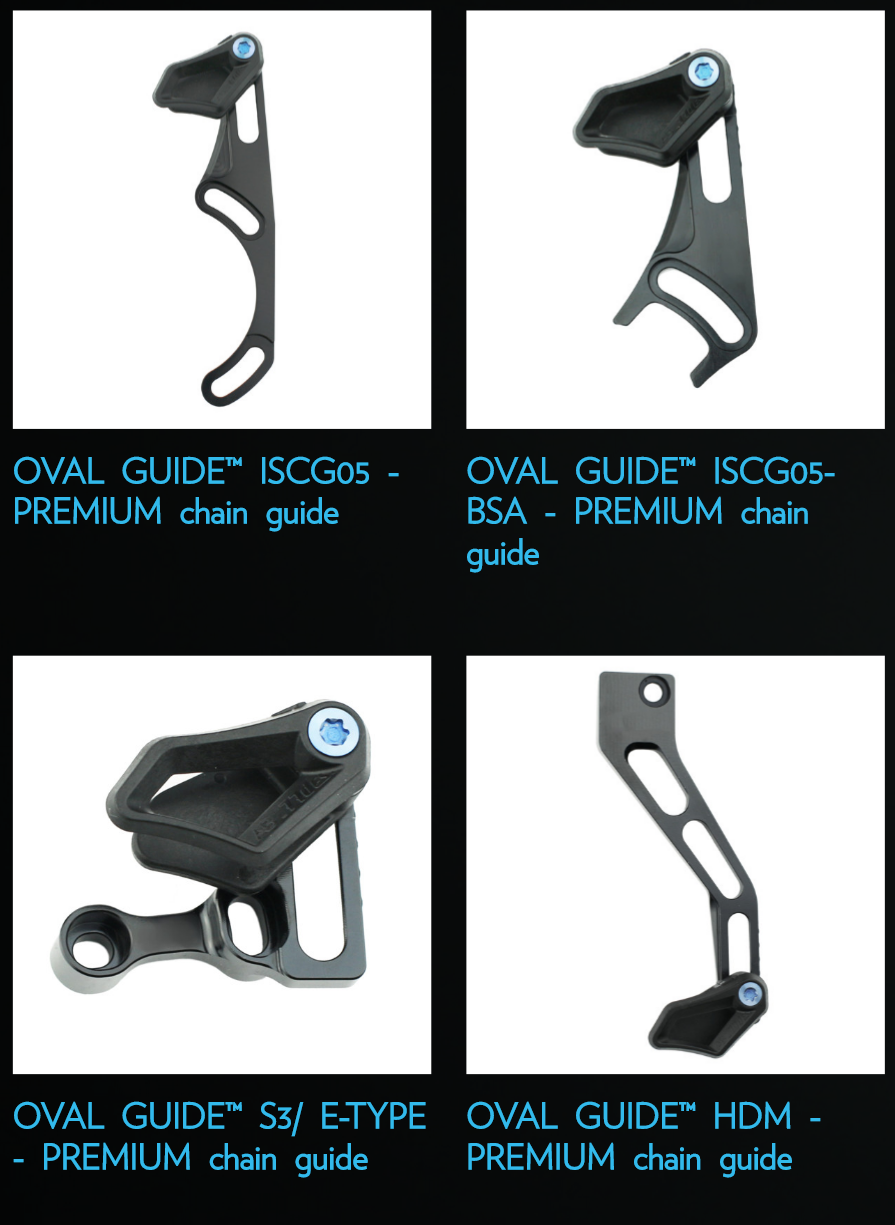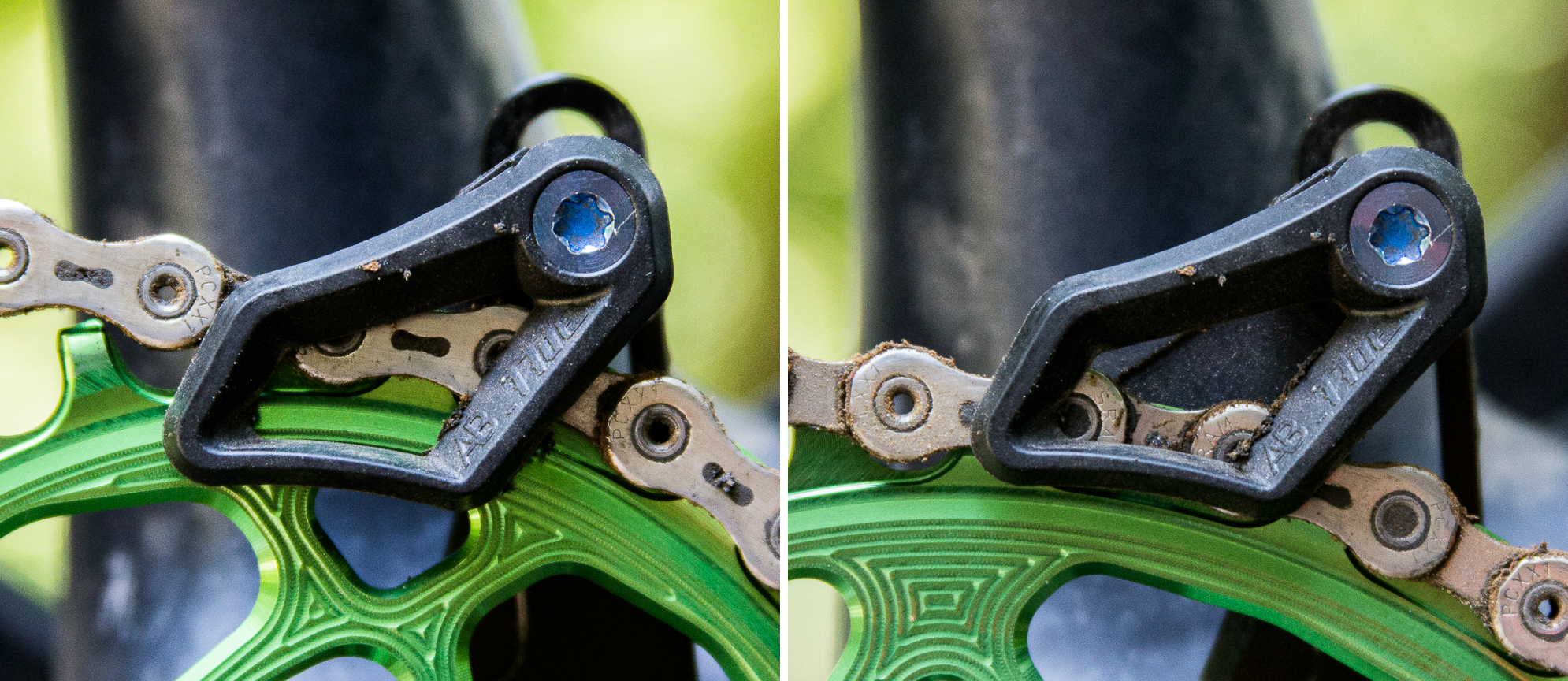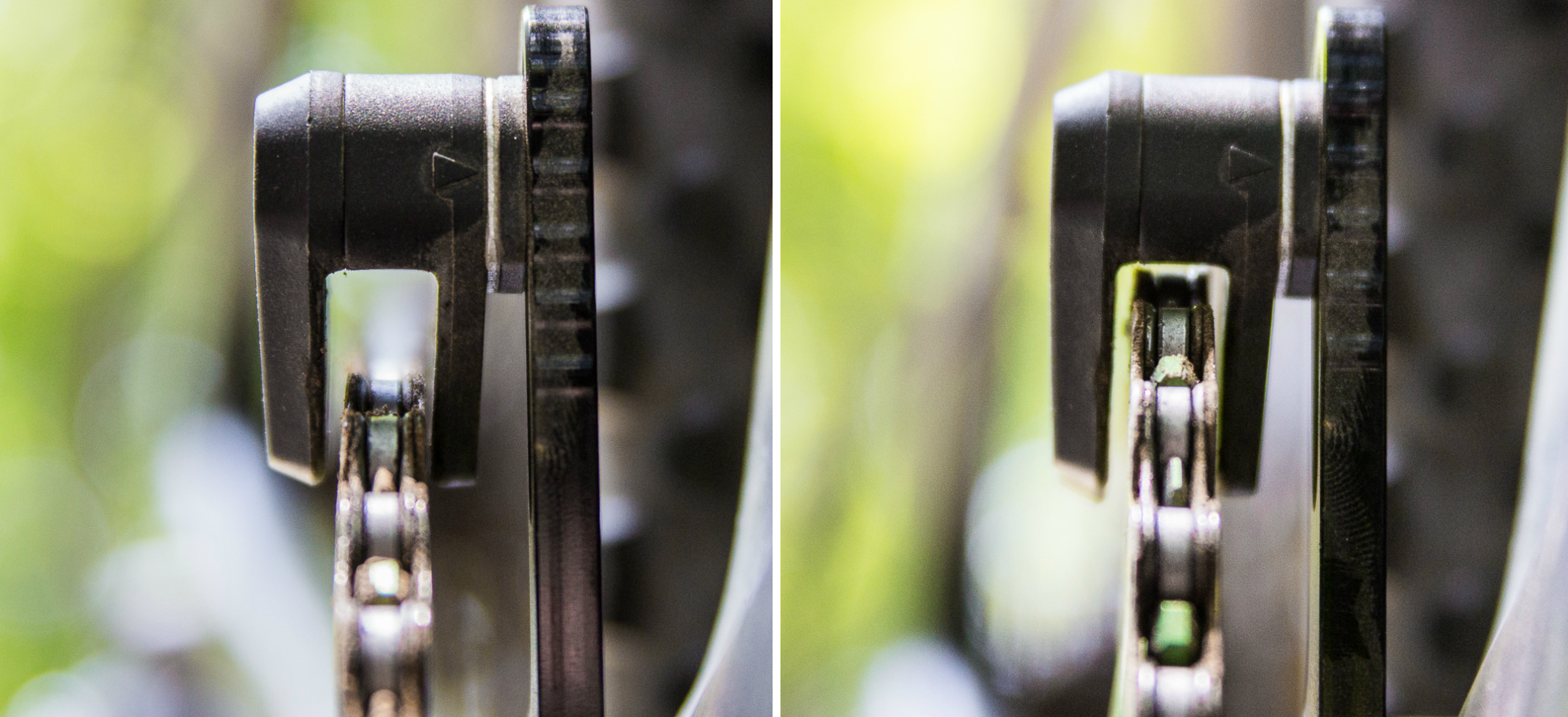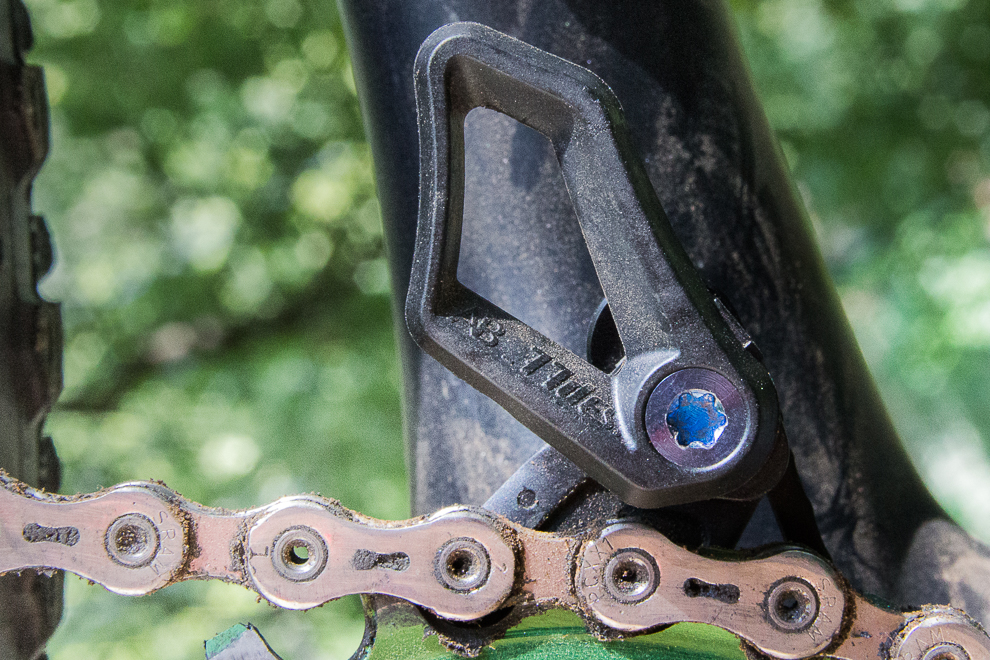AbsoluteBLACK sent me their 32t oval narrow-wide chainring & chainguide system to try so I could see what all of the fuss is about. Sporting no logos, their robust, yet subtle jewel-like design is their trademark and going on appearance alone, this ring is at the top of my list in the looks department. Regardless, my job here is to see how it performs, so I wiped the drool off my face and hit the trails. Now, for those of you that have (still) been under a rock, this IS NOT like BioPace. It’s almost backwards from that oval design.
I’ve ridden a couple of ovals for a short bit, but the true test was to get them on my familiar home trails to gain an accurate perspective as to how they perform. Check out my thoughts on how absoluteBLACK’s MTB oval works in the real world vs. on paper and whether or not their guide can keep everything on track during all of the “ups & downs”…
I received a 32t direct mount ring to fit Raceface’s Cinch system since I run it on on a couple of bikes. The ring is made of good ol’ 7075 aluminum and the construction is top notch so its longevity should match up there with the best. AB makes a ring for about every current application including all of the popular BCDs and direct mount flavors. The spiderless direct-mount version allows for quite the canvas as far as design goes, and though bling isn’t my thing, the design & machining on this anodized piece is stunning and would be welcome on any of my rigs.
As you can see in the lead pic, I placed a small level on the crank arm to give you a perspective to where the gear-ratio changes throughout the pedal stroke. The clocking of the oval ring is easily achieved by lining up the center of the crankarm with the dimple on the ring (left pic) that indicates where the center of the crankarm should line up. Depending on your seating position and/or seat angle, or if you want a more aggressive feel (making it harder earlier in the stroke), you can rotate it a notch clockwise (facing the back of the crank). The ring’s clocking is designed for most all bikes including those with a XC to trail/enduro bike geometry, but if you have a really laid back seat-angle, you might want to experiment a little to see where you like it.
You can see above (clicky for larger view), the oval placed directly over a standard round 32t ring isn’t as oval as it appears. The 32t oval is actually 30t/34t at the two extremes and places the 30t position at the dead part of the pedal stroke and 34t when you’re stepping on the gas. If you ride a round 32t, they recommend you ride an oval 32t. Now, like me, you may initially think “if I’m used to a 32t, I wouldn’t want an oval ring that maxes out at 34t because it would make climbing more difficult during that part of the pedal stroke”. I’ll go more into that below in my ride review, but that wasn’t the case.
We first saw absoluteBLACK’s chain guide for their oval rings at Sea Otter. They teamed up with 77designz out of Germany who makes some light & subtle chainguides and bash guards. There are some that believe that you don’t need a guide with a narrow/wide ring but I’ve tossed a chain with one… and besides, who doesn’t like a little added sense of security?
The guide itself has a preset inner width that is designed to work with everything up to 12 speeds (they would have come out a little earlier, but wanted to be sure it worked with the new Eagle and any other 12 speed drivetrains on the horizon. It comes with two 1.0mm and a 2.0 & 3.5mm set of spacers so you can fine tune the spacing so the chain doesn’t rub. To keep it as light as possible, it comes with titanium hardware. Installation was pretty straight forward and though I used my highly scientific method of setting the guide’s height (sticking a zip-tie I found on the ground between the chain and guide), there are actually little notches on the mount that you line up with an arrow on the guide for which ever ring size you’re using. (see in pic below)
*for testing purposes, (and just being a male), I don’t initially read directions to determine user friendliness, but always review them at some point to see if I missed things like this.
I’m not a weight weenie by any means, but ranging between 24 & 33 grams (which are within a gram or two of claimed weight), these guides are virtually unnoticeable when on the bike.
The guide is available in four versions to fit a wide range of bikes on the market.
One of the challenges to designing a guide is keeping things pretty tight, but an oval needs a little more room to spare vertically. While the narrow-wide ring does an impressive job of holding the chain on, as mentioned before, they’re not 100% effective so having a guide isn’t a bad idea. Longer travel bikes have a higher tendency to reduce chain tension during compression, and when said compression is being caused by a rather violent set of trail conditions, you have a recipe for potential derailment.
You can see above the range of coverage the guide provides throughout the oval ring’s rotation. While it is nearly impossible to cause a chain to jump off a narrow-wide ring to test the guide’s effectiveness, I detentioned the rear derailleur to see if I could manage to force the chain out of its confines using my hands. I couldn’t.
Like absoluteBLACK, 77Designz’s attention to detail and design is top notch. To make installation and chain/chainring removal easy, you can simply rotate the outer guide plate clockwise to make everything accessible.
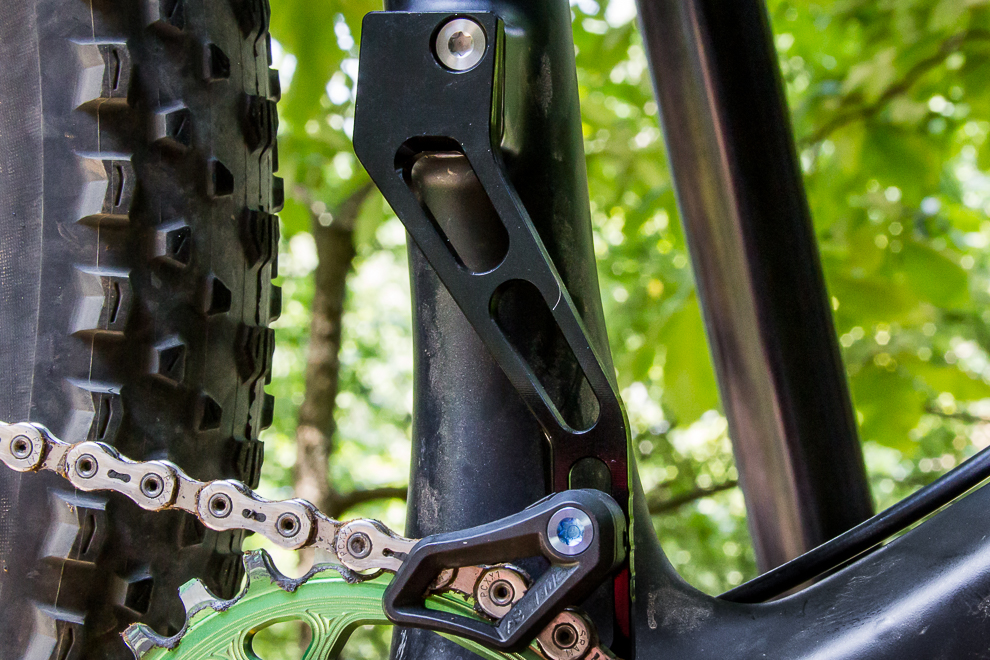
Ride Review
I’m not a terrible climber, but not too far past mediocre. When it’s time to “pay to play”, I’ll take about any discount short of an e-bike (till bad knees and age catch up) to get to the top of a climb, so I was looking forward to trying out an oval ring on my home trails. In the parking lot I was chatting with a friend about who knows what and without attempting to pay attention to how the oval felt, I headed out. Within about three or four pedal strokes, I immediately noticed things were not normal.
A little background: During my earlier days in Texas, I did a fair amount of road racing since decent trails were pretty scarce. During the off season we did fixed gear training (before it was cool… then uncool), to hone the perfect spin. That said, I’ve retained a pretty gloriously-even spin over the years so introducing something that changed the effort throughout the pedal stroke was a little alien to almost three decades of spintastic muscle memory. Because I am a creature of habit & routine, I was a little suspicious that oval and I would not get along. Well, once I got to the singletrack the slightly lumpy feeling pedal stroke started to fade.
There is not one flat spot on most of the area’s trails and the first test day’s direction was the less desirable direction because of some rather technical climbs with momentum robbing rocks and exposed roots. There are also a few climbs with some punchy soul-robbing steeper sections within the climb. Having been off the bike for a week, I knew this would be a sort of shakedown ride to dust the cobwebs off, so I was expecting a little struggle on those sections. Despite that, I felt fairly in charge on the climbs. You know… like when you’re having one of those “good days”. I know every difficult inch on every climb and I felt consistently better on every one of them. Throughout each ride I felt I had a little more steam on and after the climbs so I was pretty amazed with how much the oval ring took the edge off. On some climbs I was even using a smaller cog than usual. So if the 32t oval was equivalent to a 34t during the harder portion of the pedal stroke, wouldn’t that make it more difficult overall? Well, because the dead-er spot of the pedal stroke is more efficient and gradually increases as the power curve of the rider’s output does, you’re naturally more able to turn that portion.
A couple of quirks and things I noticed: There is no denying the oval ring helps on the climbs, and surprisingly once I had spent a little time on them, that awkward feeling I had at the beginning of my first ride to the trail head all but disappeared. Another thing I noticed was my shifting pattern changed a little. I almost always make two shifts up or down on a slight climb/descent or a hairpin turn, but often just one shift was needed with the oval assisting during the dead-spot of the pedal stroke. The one thing I did have a little trouble adapting to was out of the saddle climbing or sprinting. When standing, you move forward thus changing the origin from which you pedal. This slightly changes where the dead spot is and made standing up and mashing feel a little lumpy. This was partially due to mashing rather than spinning and the “mash” portion of the pedal stroke landing a little more within the easier part of the pedal stroke. That said, heading down one more cog made that all but disappear as my pedal stroke was still within what I consider a close to optimal position in regards to the oval ring’s clocking.
In summary, the oval ring just plain works. The few quirks I had can be overcome or adapted to for the most part by some simple changes in regard to what cog I should be in. Also considering those quirks make up such a small percentage of my riding time, they could almost be considered a non-issue. After just a few weeks on it, I’m sold and dread those punchy climbs a little less.
